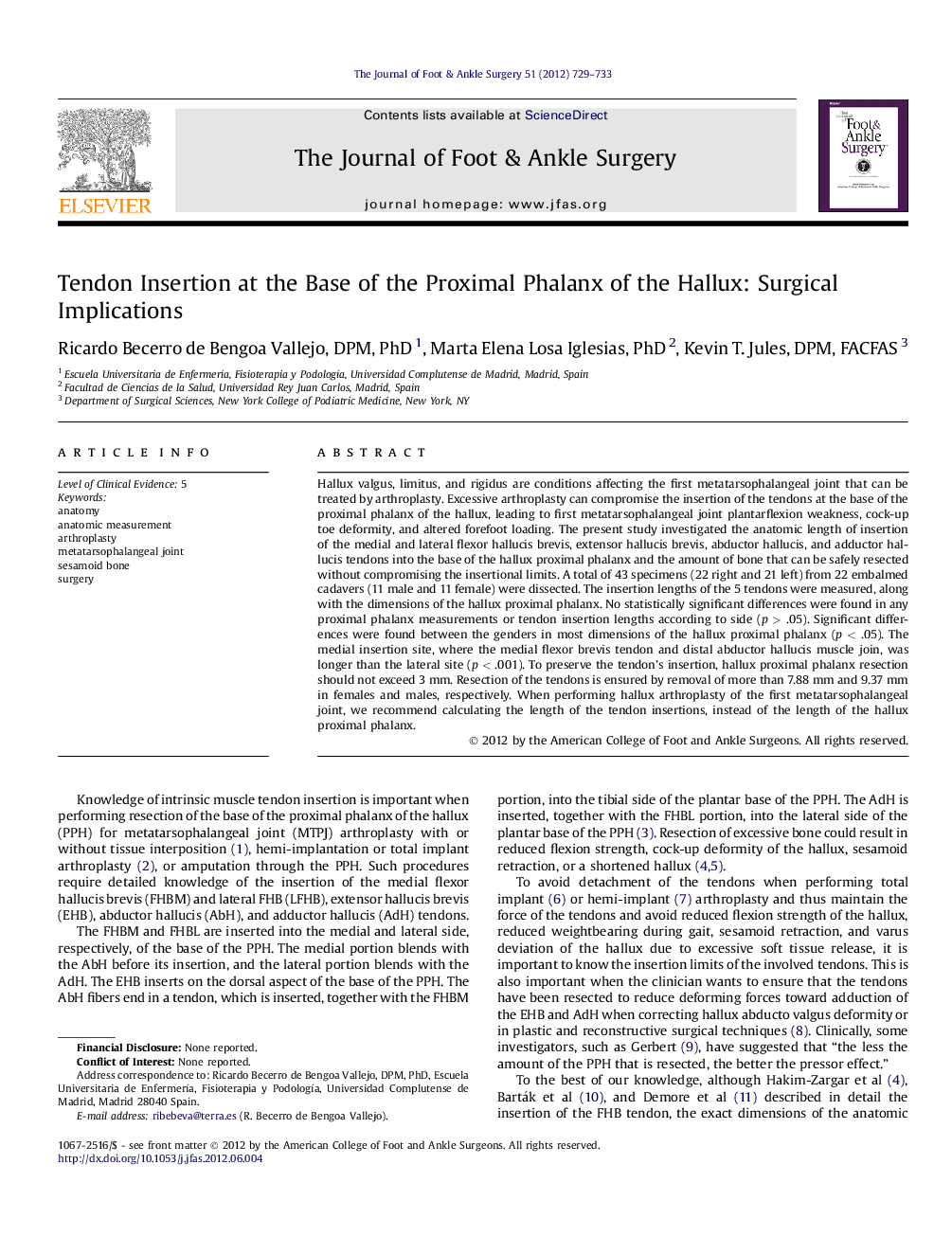| Article ID | Journal | Published Year | Pages | File Type |
|---|---|---|---|---|
| 2719786 | The Journal of Foot and Ankle Surgery | 2012 | 5 Pages |
Hallux valgus, limitus, and rigidus are conditions affecting the first metatarsophalangeal joint that can be treated by arthroplasty. Excessive arthroplasty can compromise the insertion of the tendons at the base of the proximal phalanx of the hallux, leading to first metatarsophalangeal joint plantarflexion weakness, cock-up toe deformity, and altered forefoot loading. The present study investigated the anatomic length of insertion of the medial and lateral flexor hallucis brevis, extensor hallucis brevis, abductor hallucis, and adductor hallucis tendons into the base of the hallux proximal phalanx and the amount of bone that can be safely resected without compromising the insertional limits. A total of 43 specimens (22 right and 21 left) from 22 embalmed cadavers (11 male and 11 female) were dissected. The insertion lengths of the 5 tendons were measured, along with the dimensions of the hallux proximal phalanx. No statistically significant differences were found in any proximal phalanx measurements or tendon insertion lengths according to side (p > .05). Significant differences were found between the genders in most dimensions of the hallux proximal phalanx (p < .05). The medial insertion site, where the medial flexor brevis tendon and distal abductor hallucis muscle join, was longer than the lateral site (p < .001). To preserve the tendon’s insertion, hallux proximal phalanx resection should not exceed 3 mm. Resection of the tendons is ensured by removal of more than 7.88 mm and 9.37 mm in females and males, respectively. When performing hallux arthroplasty of the first metatarsophalangeal joint, we recommend calculating the length of the tendon insertions, instead of the length of the hallux proximal phalanx.
